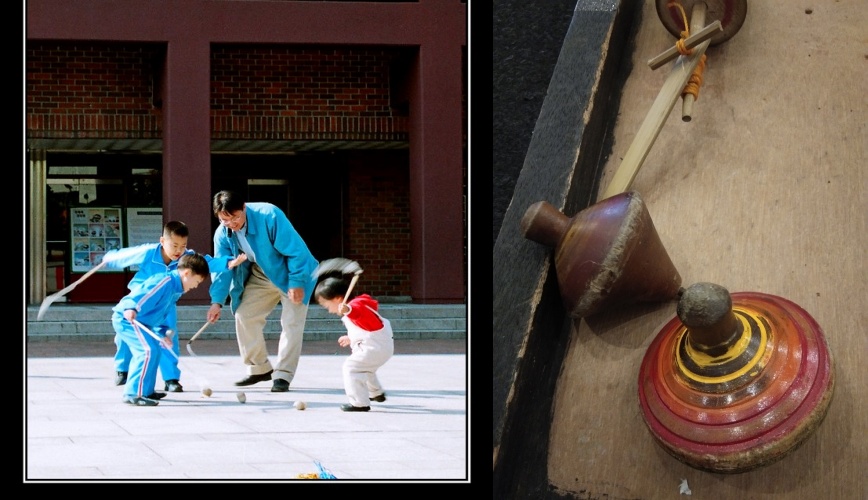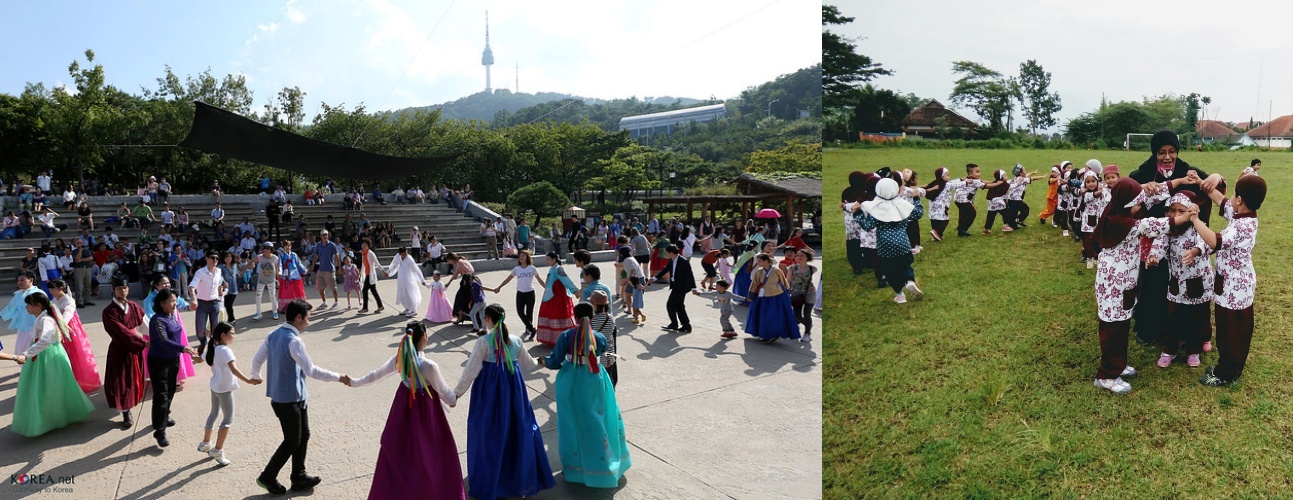- 한국어
- English
- 日本語
- 中文
- العربية
- Español
- Français
- Deutsch
- Pусский
- Tiếng Việt
- Indonesian
By Honorary Reporter Dian Srirosa Br Bangun from Indonesia
Photos = Flickr, Wikimedia Commons, iClickart
Traditional games are closely related to the traditions of the host community and fall in line with its customs, often being passed down from generation to generation. The following are traditional Korean games that have similar counterparts in Indonesia.
Yeonnalligi (menerbangkan layangan)

Yeonnalligi is a Korean folk game in which a kite is flown in the sky using reel maneuvers. This game is similar to traditional Indonesian games and the latter's methods of making and using kites, the only differences being the motif, color and shape. The shape of a yeon (kite) is usually rectangular while that of the Indonesian kite is shaped like a crescent or other shape depending on area.
Traditional kites of the two countries are made by attaching thin strips of bamboo to paper. The two types of kite games are flying a kite and cutting its string, or kite fighting, which uses a string made of a mixture of glue and glass.
Gongginori (bola bekel)

Gonggi is a popular children's game in Korea traditionally played using five or more grape-size pebbles. Today, colorful plastic stones are used instead of pebbles in the game, which can be played alone or with friends.
Indonesia has a similar game called bekel ball. The difference is that the Korean game has no ball, while the Indonesian one uses a rubber ball with six bekel seeds.
Paengichigi (gasing or gangsing)

Paengichigi is a traditional top game in Korea more popular among boys, especially in winter when they compete to spin their tops on frozen ice. The paengi is a cone-shaped top carved from hard wood such as cypress. The sides are painted with colorful pictures such as the red and blue taegeuk (supreme ultimate) symbol and coated with wax.
In Indonesia, a similar game is gasing or gangsing. Usually made of wood and more recently plastic, the top in this game can rotate on its axis and balance at a point with rope made of tree bark or nylon. Played on the ground, the top, consisting of the head, body and legs, comes in various forms depending on region, being oval or shaped like hearts, cones, cylinders or flying saucers.
Ganggangsullae (permainan ular naga)

Ganggangsullae is a traditional dance from Jeollanam-do Province that is also played like a traditional game on Chuseok (Korean Thanksgiving). The dance has several games and chants, so it lasts for hours as women hold hands in circles and sing. At first, the movement starts slowly and gradually quickens so that it looks like people are running in a circle. This game promotes harmony, equality and friendship between women.
In Indonesia, a similar game is ular naga (snake dragon), which is usually played by children outside in the afternoon. The number of players is usually five to 10. The attraction of this game is the dialogue and cheerful nature since players must keep singing.
Maltagi nori (kebo bunting or kuda tumprok)

This "horse riding game" originally was popular among boys due to its rough nature. The defending team has a player lean against a wall or tree, while the remaining members stand with their backs bent and their heads between their groin areas, holding their thighs with both hands. Other players jump in the air to land on the backs of the "horse," and if the line breaks, that side loses.
In Indonesia, kebo pregnant (kubo bunting), or kuda tumprok depending on area, is a similar test of endurance. The kebo group wins if it doesn't collapse when ridden by the rider group. The game continues by swapping positions and the kebo group switches places with the rider group. If its line collapses during the game, the kebo group loses and must defend in the next round.
kalhong617@korea.kr
*This article is written by a Korea.net Honorary Reporter. Our group of Honorary Reporters are from all around the world, and they share with Korea.net their love and passion for all things Korean.